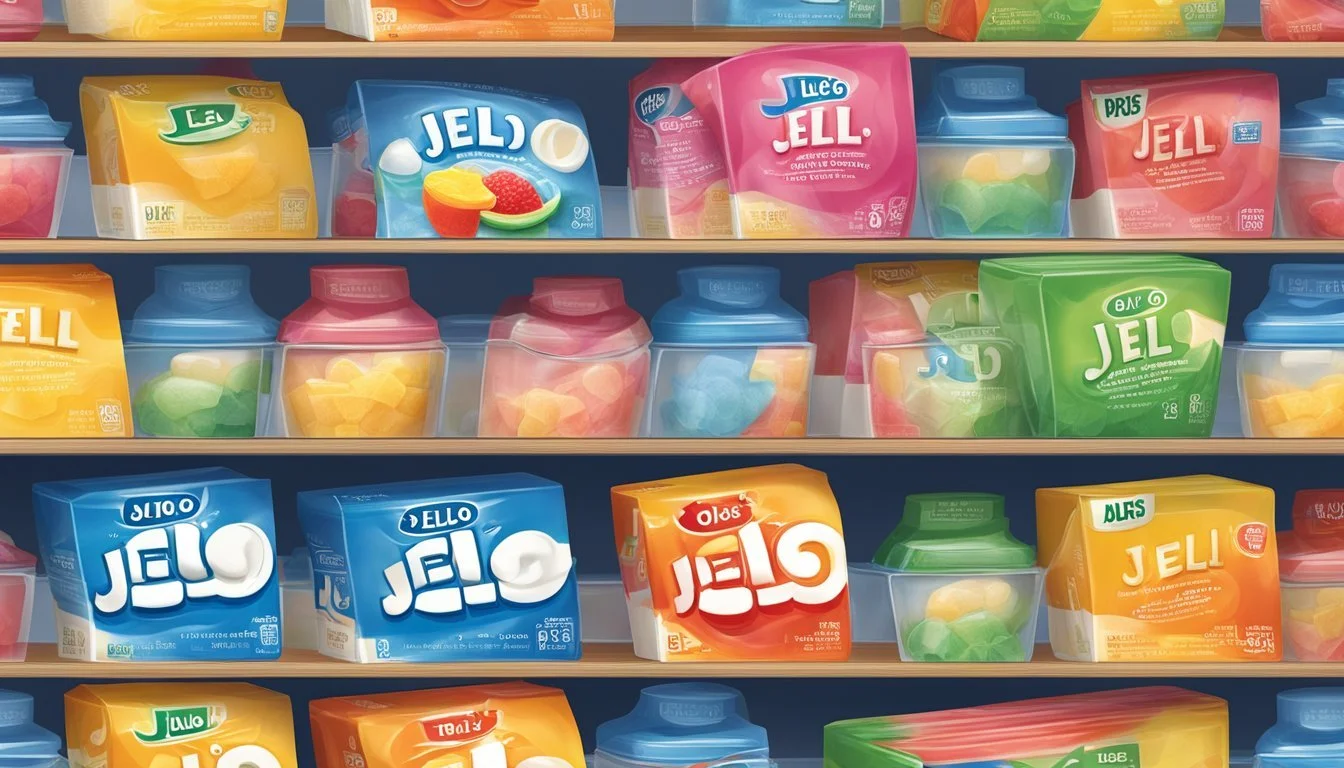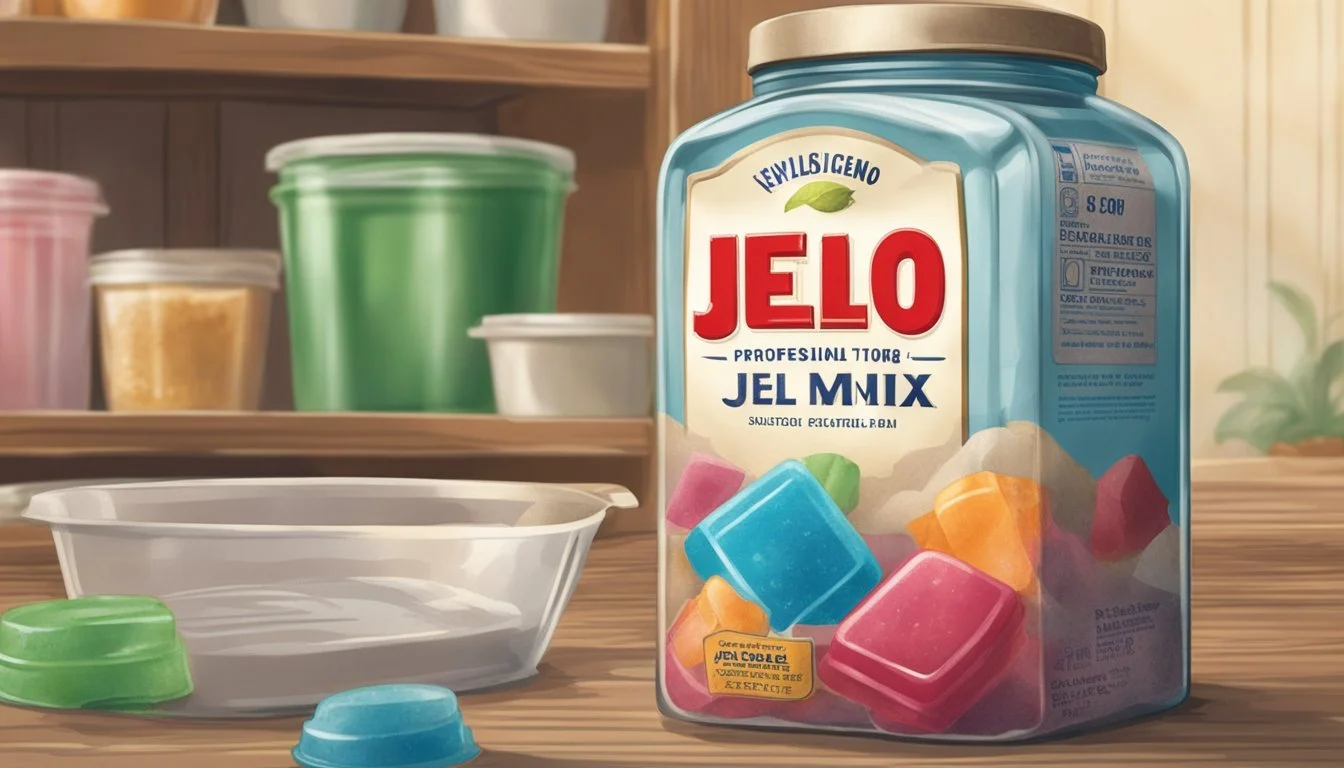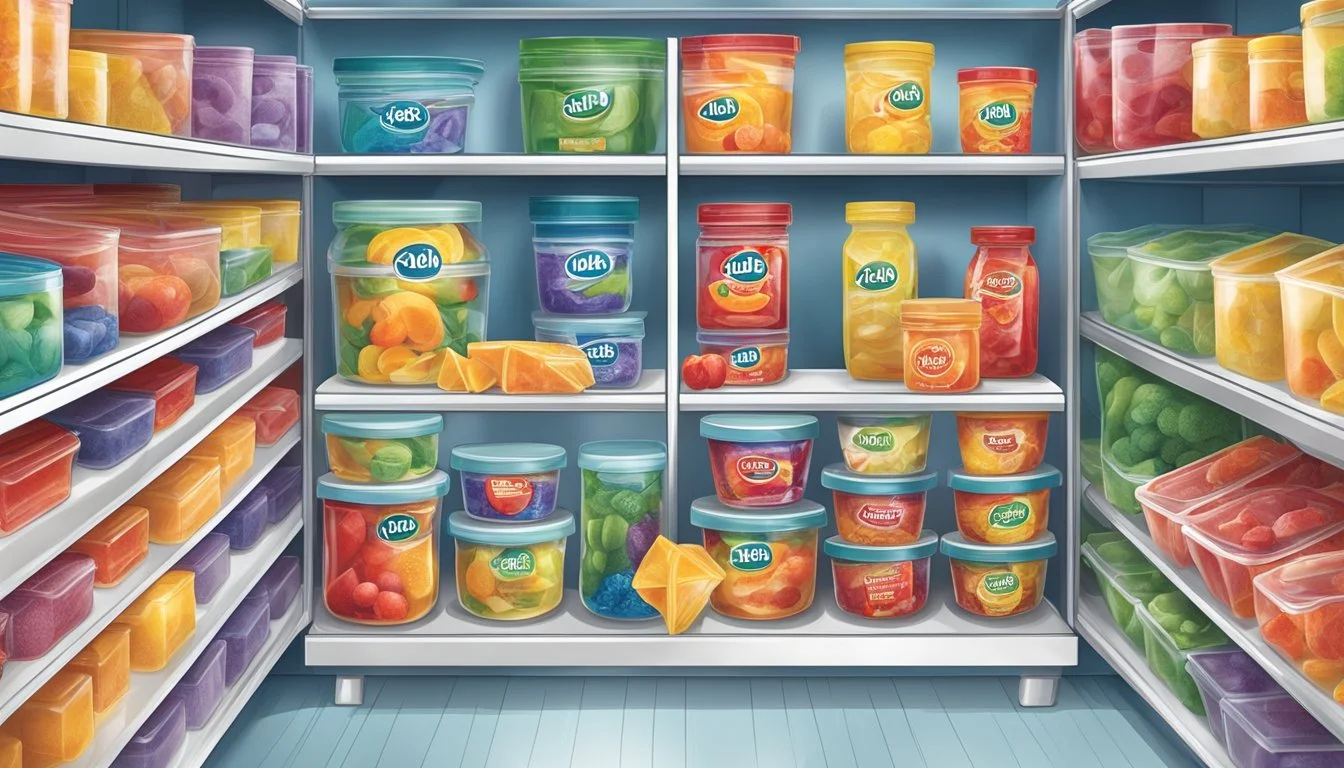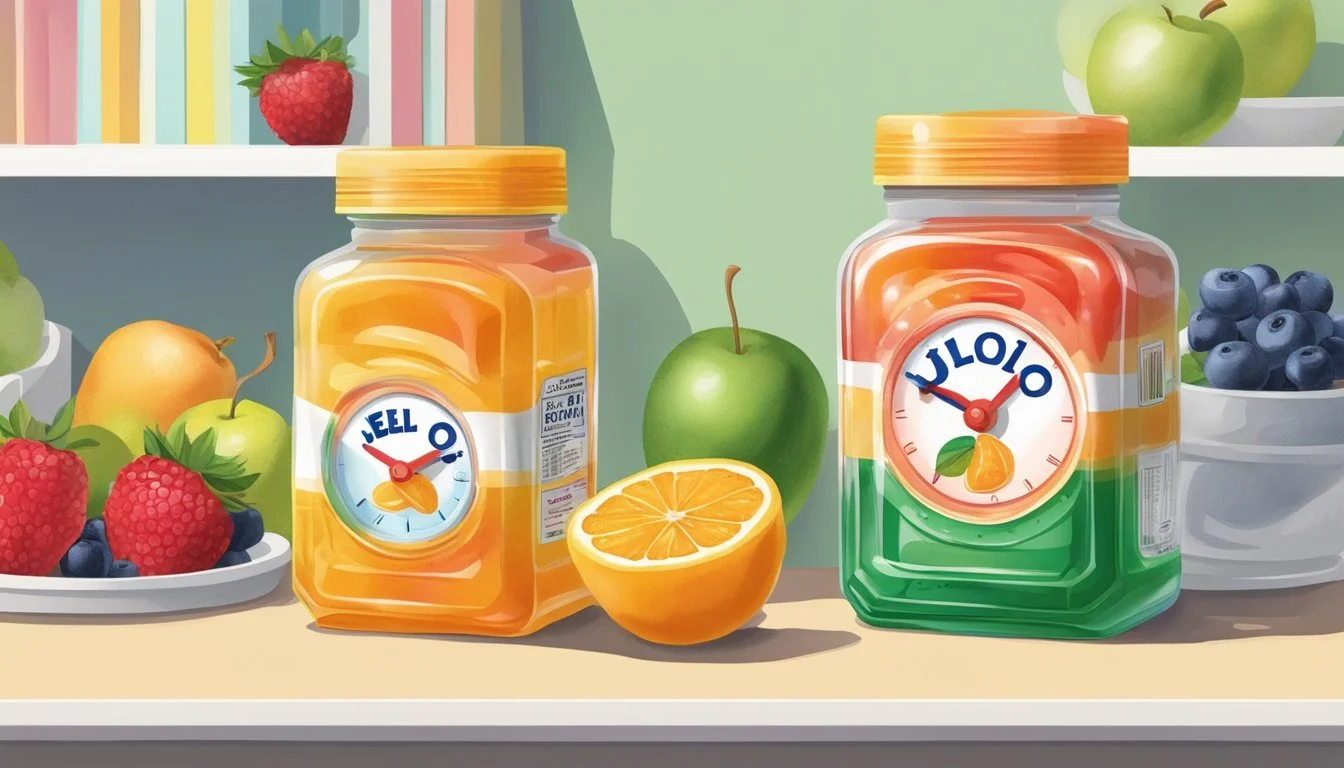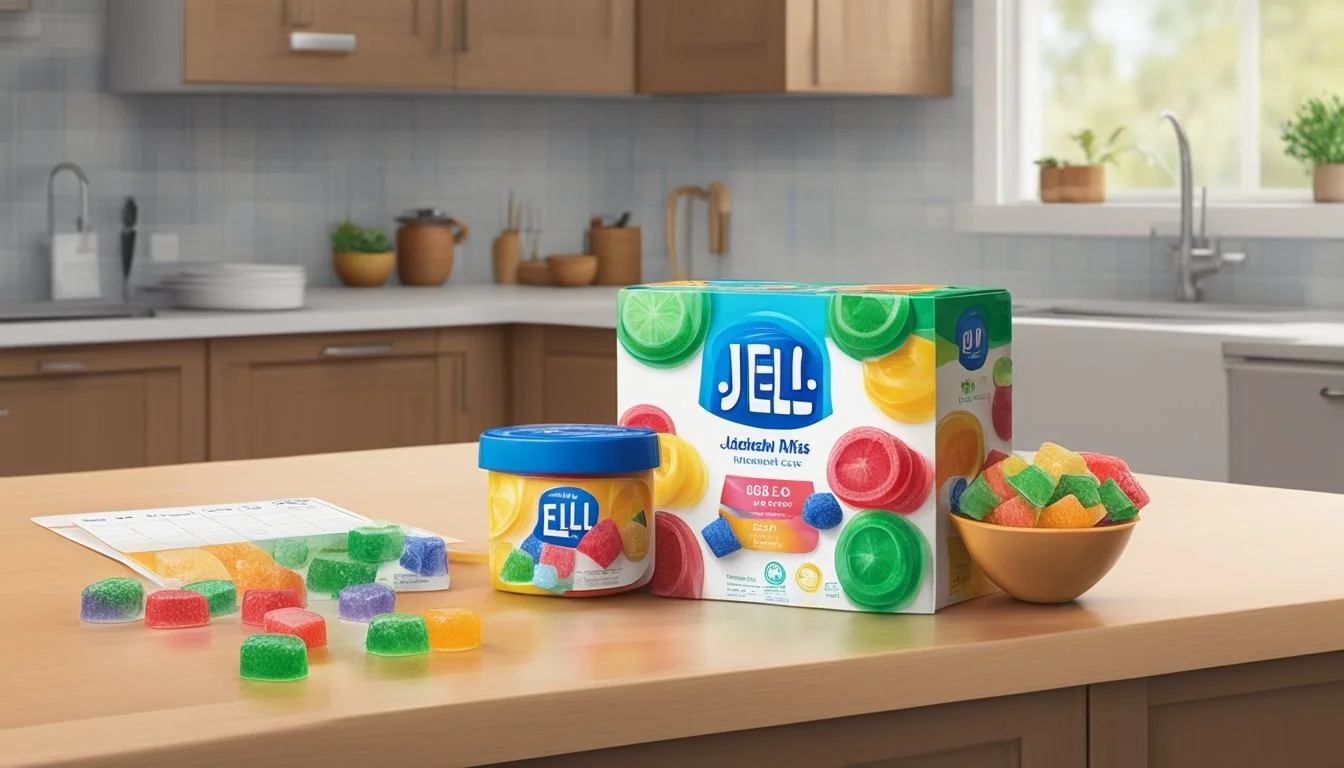How Long Does Jell-O Mix Last?
Shelf Life and Storage Tips
The longevity of Jell-O mix is a common query for those who enjoy this versatile dessert. A key factor in determining the shelf life of Jell-O mix is whether it is unopened or prepared. An unopened box of Jell-O gelatin (how long does jell o gelatin last?) can last practically indefinitely when stored in a cool, dry place away from direct sunlight and heat. However, once the package is opened, the dry powder should be used within about three months for the best quality.
Prepared Jell-O, or Jell-O that has been mixed with water and set, has a shorter shelf life. Typically, it should be consumed within a week when kept refrigerated in a covered container. This ensures not only safety but also the best texture and flavor experience. It's worth noting that adding ingredients such as fruit to the Jell-O can alter its longevity, potentially shortening the time it remains at optimal quality.
Storage conditions are crucial in preserving the quality of both powdered and prepared Jell-O. Exposure to high temperatures, humidity, or moisture can result in spoilage or affect the product's ability to set properly when prepared. The presence of an off flavor or failure to set can be signs of degradation, reminding consumers to be mindful of the product's storage and lifespan.
Understanding Jello Mix
Jello mix, often known as Jell-O, is a popular gelatin-based dessert that comes in a variety of flavors. The primary ingredient in Jello is gelatin, a protein derived from animal collagen, which gives Jello its unique texture. It's a versatile product that can be used to make not only straightforward gelatin desserts (What wine goes well with desserts?) but also more complex recipes like molds with embedded fruit or creamy layers.
When discussing the shelf life of Jello mix, it's important to distinguish between unopened, dry mix and the prepared product. An unopened box of dry Jello mix can last well beyond the date printed on the package if stored properly. Ideal storage conditions for dry Jello mix are in a cool, dry place where it's shielded from moisture and extreme temperatures, which could affect its quality and lifespan.
Jello Mix Type Shelf Life Unopened, Dry Mix Several months to years past 'Best By' date Opened, Dry Mix Approximately 3 months Prepared Jello Up to 7-10 days in the refrigerator
Once prepared, however, Jello should be consumed within a shorter timeframe. It can generally last for seven to ten days when stored in a covered container in the refrigerator. This is because moisture and varying temperatures can introduce bacteria, affecting its safety and quality. Thus, monitoring storage conditions is crucial for maintaining the dessert's longevity and safety.
Consumers enjoy Jello not only for its ease of preparation but also for the diversity it offers in flavors and dish variations. Although the dry mix has a long shelf life, it's still essential to check expiration dates and prioritize proper storage to ensure the best experience when consuming this iconic dessert.
Shelf Life Fundamentals
Understanding the shelf life of Jello is critical in ensuring you enjoy it at its best quality and freshness. It is influenced by factors like storage conditions and whether the Jello is in powdered form or has been prepared.
Dry Jello Shelf Life
Unopened and stored properly, dry Jello mix has a shelf life of approximately one year. This timeframe is based on ensuring the product remains in a cool, dry place away from direct sunlight. Manufacturers often provide a use-by date or best before date as a guideline. However, it's important to note that dry Jello can remain safe to consume even after this date if no signs of spoilage are present and it has been stored correctly.
Prepared Jello Shelf Life
Once prepared, Jello's quality and safety begin to change. Prepared Jello, when kept sealed and refrigerated, typically lasts for 7 to 10 days. Consistent refrigeration at or below 40°F (4°C) is essential to maintain its freshness and prevent the growth of bacteria. Always use a clean utensil when serving to avoid contamination, which can shorten its usable life.
Signs of Spoilage
When examining Jell-O for spoilage, there are clear indicators to look for. Mold growth and changes in appearance, smell, and taste are telltale signs that Jell-O has gone bad.
Visual Cues
Discoloration: Jell-O should have a uniform color. If there are spots that look faded or a different color, it may indicate spoilage.
Mold: Any visible mold growth is a clear sign that the Jell-O should not be consumed. Mold can appear as fuzzy spots, either green, white, or black.
Texture Changes: A watery layer or a very thick, rubbery consistency can be indicators of deterioration.
Odor and Taste
Odor: Fresh Jell-O typically has a sweet, slightly fruity smell. An off or sour odor can signify bacterial growth and spoilage.
Taste: If the Jell-O has a bitter or otherwise unpleasant taste, it should not be consumed. Taste testing is not recommended if other signs of spoilage are already present, to avoid potential contamination.
Proper Storage Practices
Proper storage of Jello mix is essential for maintaining its quality and extending its shelf life. These methods vary between unopened and prepared Jello, with specific considerations for temperature and container type.
Storing Unopened Jello
Unopened Jello mix should be stored in a cool, dry place such as a pantry or cupboard. The ideal temperature for storage is between 50-70°F (10-21°C). Ensure that the area is away from direct sunlight, heat, and moisture, which can compromise the quality and longevity of the mix.
Pantry/Cupboard: Place the Jello mix in its original packaging, ensuring it’s intact with no tears.
Airtight Containers: For additional protection, consider transferring the mix into an air-tight container to prevent exposure to air and humidity.
Storing Prepared Jello
Once prepared, Jello should be kept in the refrigerator to maintain its texture and prevent spoilage. Store it in a covered container to protect it from absorbing other odors and flavors.
Temperature: Keep the refrigerator temperature at or below 40°F (4°C).
Airtight Container: Use an airtight container to store the prepared Jello. This will not only keep it fresh but also prevent it from picking up flavors from other foods.
Avoid Freezing: Freezing is not recommended, as it can alter the consistency and degrade the quality of the Jello once thawed.
Maximizing Freshness and Taste
To ensure that Jell-O mix maintains its best quality in taste and freshness, attention to storage conditions is essential. Proper handling and temperature control are key factors.
Avoiding Contamination
To avoid contaminating the Jell-O mix, always use clean utensils when handling it. For opened dry Jell-O mix, transfer the contents to an airtight container; this prevents the introduction of moisture and other contaminants that can compromise the freshness and taste.
Temperature and Humidity Control
Temperature and humidity have significant impacts on the shelf life of Jell-O mix. Store the unopened and opened dry Jell-O mix in a cool, dry place away from direct light. Ideally, the storage area should maintain a stable temperature. Dramatic temperature changes can cause condensation, which introduces moisture that can degrade the Jell-O mix. For extended shelf life, refrigeration can protect against spoilage — an unopened package of dry Jell-O mix can last for twelve to eighteen months in the fridge, while an opened pack should be used within three to four months for optimal taste.
Handling Expired Jello Mix
When dealing with expired Jello mix, it's crucial to distinguish between the use-by, expiration, and best before dates to ensure food safety. While some products may remain safe to eat beyond these dates, caution is advised to avoid consuming spoiled food.
Using Beyond the Date
Expired Jello mix can be a puzzling conundrum for many. The important distinction lies in whether the product is past its "best before" date—which suggests when the quality of the product is at its peak—or the "expiration" date, which is more closely linked to food safety.
"Best Before" Date: This is about quality rather than safety. A mix that's past this date may not taste as intended but isn't necessarily harmful.
"Use-By" or "Expiration" Date: This indicates the last day the product is expected to maintain its peak quality and safety. Use of the product beyond this date becomes a matter of cautious scrutiny.
To determine if expired Jello mix is safe to eat:
Inspect the package. If it's unopened, dry, and has been stored in a cool, dark place, it's more likely to be safe.
Check for any signs of moisture or contamination. If the package has been compromised, or there's evidence of moisture, discard it immediately.
Smell and look at the mix once opened. Any off-odors or unusual colors are signs the product has spoiled and should not be used.
Storage Tips:
Store in a cool, dry place to extend its shelf life.
Once opened, keep the mix well-sealed to prevent exposure to moisture.
Remember, while Jello mix can often last a significant time after the use-by date if properly stored, one should be cautious and prioritize food safety above extending the product's use.
Food Safety Considerations
When considering the shelf life of Jell-O mix, a primary concern is the risk of food poisoning due to improper storage or consumption past its expiry date. These risks are heightened if the mix displays signs of spoilage or has been stored incorrectly.
Recognizing Food Poisoning Risks
Food poisoning is often the consequence of consuming products that harbor harmful bacteria capable of causing illness. For Jell-O mix, the risk of bacterial growth increases if the product is exposed to moisture or stored at temperatures that facilitate bacteria proliferation. Indicators that Jell-O mix may be unsafe include:
Packaging Integrity: If the package is partially opened, torn, or shows signs of damage, the mix could be contaminated.
Moisture Exposure: Dampness or clumps in the powder suggest moisture has entered the packaging, which can lead to bacterial growth.
Expiration Date: Using a mix past its expiration date may increase the risk of ingesting harmful bacteria.
Unusual Odors or Colors: Any noticeable changes in odor or color can indicate spoilage.
Ingesting spoiled Jell-O mix may result in symptoms of food poisoning, such as nausea, vomiting, and stomach discomfort. It's crucial for consumers to adhere to proper storage guidelines and to thoroughly inspect the mix before use to minimize these risks.
Special Cases and Exceptions
While Jell-O mix generally has a stable shelf life, certain practices and additions can significantly deviate from the norm. Understanding these exceptions ensures proper handling and consumption.
Freezing Jello
Freezing can extend the shelf life of Jell-O, though it is not a typical storage method for dry mixes. When Jell-O is prepared and then frozen, the result can be a dessert akin to Jello pudding pops. However, freezing may alter the texture upon thawing, potentially leading to a less desirable consistency. It's important to note that frozen jello should be consumed within two months to maintain quality.
Example of frozen Jell-O shelf life:
State Shelf Life Prepared and frozen Up to 2 months
Adding Fruit or Other Ingredients
Adding ingredients such as fruits can affect both the set time and longevity of Jell-O. Fruits with high water content or enzymes, like kiwi or pineapple, can prevent Jell-O from setting properly. Additionally, these additions can shorten the shelf life due to their own perishability. Homemade jello with fruit should be eaten within a few days, while store-bought cups of jello with added fruit typically have a shorter lifespan compared to their plain counterparts.
Guidelines for Jell-O with added ingredients:
Dry Jello: Longer storage time, up to 18 months past best-by date
Homemade Jello (with fruit): Consume within 3-4 days
Premade Cups of Jello (with fruit): Follow the expiration date, and consume quickly once opened
Advanced Tips
This section provides strategies for rejuvenating Jello that has passed its prime and presents creative ways to repurpose Jello mix for a variety of desserts.
Reviving Stale Jello
When Jello loses its optimal texture and starts to become rubbery, one can attempt to revive its freshness. To do this, first check the color and smell to ensure it hasn't spoiled. If the Jello is discolored or has an off odor, it should be discarded. For Jello that's simply rubbery but still safe to eat, consider soaking it briefly in warm water to help restore a bit of its suppleness. This technique, however, is not guaranteed and works best if the rubbery texture has just begun to set in.
Creative Uses
If homeowners find themselves with an excess of dry Jello mix or Jello cups past their peak but not yet expired, they can use them creatively in desserts rather than discard them. Here are specific suggestions:
Dry Jello Mix: Sprinkle it onto popcorn or mix into cake batter for added flavor.
Jello Cups: Use as a colorful glaze or topping for ice cream and other desserts.
By paying attention to the Jello's packaging, storage, and condition, they can both extend its shelf life and find new uses for it as an ingredient in a variety of desserts.


